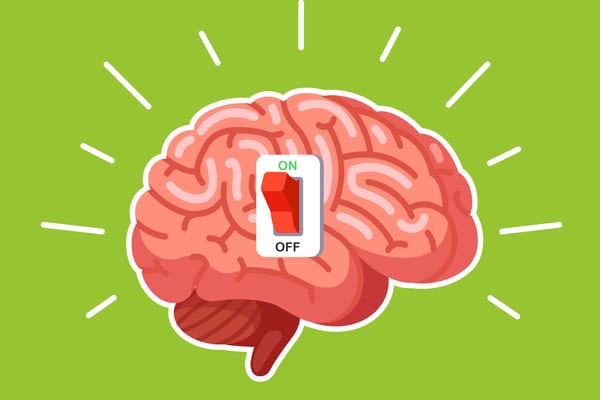 March is Brain Injury Awareness Month
March is Brain Injury Awareness Month
Every March, the Brain Injury Association of America (BIAA) leads the nation in observing Brain Injury Awareness Month. This year, they have exciting new developments to share for the brain injury community, including new advocacy initiatives, events, fundraising opportunities, and more.
What Are Traumatic Brain Injuries?
According to the American Brain Foundation, traumatic brain injuries, or TBIs, occur when the brain experiences sudden trauma or damage, typically from blows to the head or violent jolts. TBI can result from both closed injuries—in which the head experiences blunt force trauma but the skull remains intact—and open injuries that pierce the skull and damage brain tissue directly.
Injuries can be incurred from a variety of sources, including sports-related injuries, falls, or car accidents. Symptoms can range from mild to severe depending on the location and extent of the damage. The most common type of traumatic brain injury is a concussion. This type of TBI often presents with mild symptoms but can still impact brain function, whether temporarily or permanently. A TBI may or may not involve loss of consciousness.
Traumatic brain injuries are divided into primary and secondary types. Individuals with primary brain injuries experience the full force of their injury at the time of the incident. Secondary brain injuries evolve over time following the moment of injury, causing symptoms to change, worsen, or intensify hours to days after the traumatic event.
1.7 million people experience TBI annually. In 2020, there were estimated to be 64,362 deaths from traumatic brain injuries.
Risk Factors
The most common causes of traumatic brain injury are falls, motor vehicle crashes, firearm-related incidents, and physical assaults.
Research shows that several demographics are more likely to experience TBI:
- Adults over the age of 60, with the Centers for Disease Control (CDC) reporting that adults over 75 have the highest rates of TBI-related hospitalizations and deaths of any age group
- Young children, particularly from birth to four years of age
- Young adults between the ages of 15 and 24
- People who are incarcerated
- Members of the military
- Men are hospitalized nearly twice as often for TBI-related issues and are statistically three times more likely to die as a result of traumatic brain injury.
Despite current studies showing that men are more likely to experience a traumatic brain injury, much of this research fails to account for the fact that women are more likely than men to experience TBI from intimate partner violence. In fact, up to 94% of injuries women sustain from intimate partner violence are to the neck or head. Eve Valera, PhD, Associate Professor of Psychiatry at Harvard Medical School, notes that this underrepresentation of women in TBI studies has led to a significant knowledge gap. “[T]here remains relatively little research on females or sex and gender differences [related to TBI],” Valera says, even though “data indicate that a substantial number of women who have experienced physical [intimate partner violence] have sustained a [brain injury] from an abusive partner.”
Additionally, athletes who participate in high-contact sports are also at a higher risk for developing TBI and TBI-related disorders. Chronic traumatic encephalopathy (CTE) is a neurodegenerative disorder that seems to be connected to repetitive head injuries, such as those incurred in high-contact sports like football, soccer, or boxing. While it’s clear a correlation exists between CTE and repeated head trauma, researchers are not yet certain of the precise relationship between CTE and TBI. Additionally, there is no way to accurately predict how many head injuries a person can suffer before developing CTE.
Traumatic brain injuries resulting from damage to crucial nerve fibers in the brain are known as diffuse axonal injuries or DAIs. When the body experiences a traumatic impact, the sudden, jarring movement can cause cranial nerve fibers to tear as the brain shifts position and makes contact with sharp bones on the inside of the skull, such as the sphenoid bone.
Due to the nature of DAIs, the resulting damage is often difficult to visualize and is not always readily apparent on CT scans and MRIs. Diffuse axonal brain injuries can result in coma and often damage many different sections of the brain.
Traumatic Brain Injury Signs and Symptoms
While some signs and symptoms of traumatic brain injury are overt and easy to spot, others are more difficult to detect. TBI symptoms also vary depending on the severity and location of the damage.
Common signs and symptoms of a mild traumatic brain injury, such as a concussion, include:
- Dizziness
- Headache
- Confusion
- Lightheadedness
- Blurred vision
- Fatigue or lethargy
- Ringing in the ears
Other symptoms can include changes in personality and behavior, difficulty with memory and concentration, and disruptions to one’s typical sleep patterns.
In addition to the above symptoms, individuals with moderate and severe TBIs may experience:
- Nausea and vomiting
- A persistent headache, or one that continues to worsen
- Seizures or convulsions
- Extreme sleepiness
- Speech changes (including slurring or difficulty recalling words)
- Loss of coordination
- Confusion, restlessness, or agitation
- Weakness or numbness in the arms, legs, hands, or feet
- Pupil dilation in one or both eyes
If you or a loved one has suffered a head injury and is experiencing any of the above symptoms, seek out medical attention as soon as possible. Even mild brain injuries are serious and should be evaluated by a qualified medical professional.
How You Can Get Involved
If you want to get involved, you can:
- Raise Awareness by Supporting the BIAA’s Mission: Be a voice for brain injury this March by talking to friends and family about the importance of brain injury awareness and asking them to support the mission of the Brain Injury Association of America. BIAA has made it easy for you to set up a fundraising page that shares why brain injury is important to you and lets you fundraise for a good cause. If you raise $100 by the end of March, BIAA will send you an exclusive 2025 I’m a Voice for Brain Injury! t-shirt. If you raise $250, you’ll get a special BIAA knitted cap. Become a Voice for Brain Injury today!
- Share Your Story and Spread the Word: Everyone with a brain injury has a story to tell, and BIAA wants to hear yours. You can use their premade social media templates to create a post, sample language about the campaign to write a letter or a blog, printable signs to hang up or use, and more. They also encourage all brain injury survivors to submit their personal stories to BIAA here for an opportunity to be featured on our My Brain Injury Journey stories page.
- Become an Advocate: There are many ways you can get involved from introducing a resolution or proclamation in your hometown to joining hundreds of other advocates on Capitol Hill. Join one of BIAA’s upcoming webinars (like the Concussion Myth Busters, below) to learn how you can get involved and support BIAA’s advocacy agenda.
- Concussion Myth Busters – March 25 at 2:00 p.m. ET. When it comes to concussions, there is a lot of misunderstanding among the public. During this webinar, learn about common concussion myths and how to counteract them. Register here.
—
Photo Credit: Meralyx / Shutterstock.com



